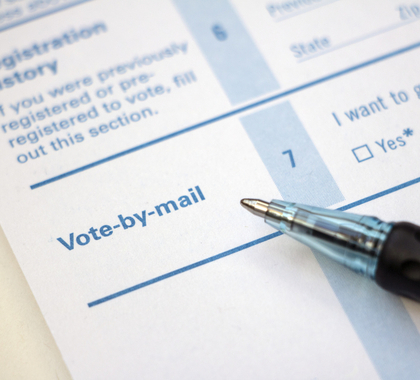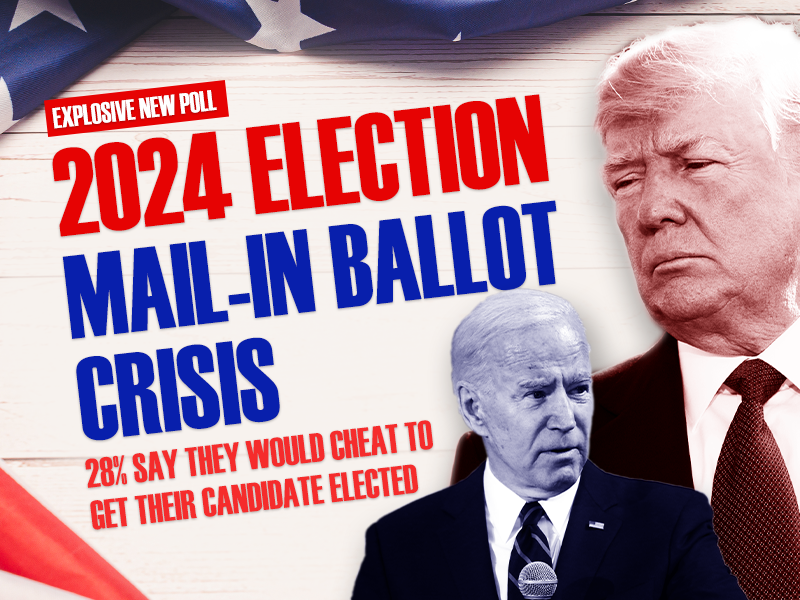Trump is correct regarding problems with mail-in voting. It is an invitation for Voter Fraud, even though Democrats insist that fraud doesn’t exist. A search on Goggle likewise counters the existence of mail-in ballot fraud and further calls out President Trump for suggesting that fraud does exist.
The Trump administration, as well as the Republicans in Washington, have been warning about the potential for all sorts of problems related to mail-in voting in this year’s election, not to be confused with absentee ballots.
With the COVID-19 issue still lingering, Democrats are going to continue their strong push toward voting by mail as a way to prevent large crowds from gathering at polling places, fully realizing this method of voting is conducive to voter fraud in the upcoming November election.
Status of mail-in ballots
It has been reported that at least 77 percent of eligible voters will have the option of casting a mail-in ballot this November.
As of June 2020 five states, Colorado, Hawaii, Oregon, Washington and Utah, were conducting elections almost entirely by mail.
California Governor Gavin Newsom signed a bill Thursday, June 18, 2020, to require county officials to mail a ballot to every registered voter for the November election, cementing into law the Democratic governor’s earlier order to mail out ballots statewide in response to the coronavirus outbreak.
Nevada recently passed a bill on Sunday, August 2nd, 2020 to mail all voters ballots amid the pandemic.
The rest of the states can be divided into two categories: those that allow any registered voter to apply for mail-in ballots, and those that require an excuse.
Registered voters in Illinois do not need an excuse to vote absentee. Last month, the state legislature passed a bill that would expand mail-in voting by sending ballot applications to any voter who applied for an official ballot in the 2018 general election, the 2019 municipal elections or the March 2020 primary.
Pennsylvania’s state government plans to use money from the federal emergency coronavirus aid bill to cover the cost of postage, which could total several million dollars to cover 55 cents per ballot. It was claimed that by doing so voting would be made more accessible, safer, and easier during the coronavirus pandemic. Another factor is that PA is seeking to increase its vote-by-mail push as a battleground state.
Trump’s tweet about delaying election
What Trump tweeted on July 31, 2020 instantly became a fire storm of protest:
“With Universal Mail-In Voting (not Absentee Voting, which is good), 2020 will be the most INACCURATE & FRAUDULENT Election in history. It will be a great embarrassment to the USA. Delay the Election until people can properly, securely and safely vote???”
We’ve already heard of multiple occasions where ballots have been lost, thrown away, etc. There’s nothing different going to happen for those ballots than already happens for our current mail. Every single person reading this has had mail lost or delivered to the wrong address.
Trump campaign spokesperson Hogan Gidley later said in a statement: “The President is just raising a question about the chaos Democrats have created with their insistence on all mail-in voting.”
The National Constitution Center found that many states have the power to delay general election voting due to an emergency — though postponing a presidential election would be completely unprecedented.
Chaos following mail-in voting
What about some of the chaos Democrats have created with their insistence on all mail-in voting?
As reported on July 31, 2020, a New York June 23 primary election has yet to be decided.
“Like everything else in the world, New York’s June 23 primary election was transformed by COVID-19. The scale of mail-in ballots was 17.5 times higher than in the last primary election, and the state’s institutions were not prepared for the deluge of ballots.”
“When Jada Yuan of the Washington Post tried to figure out what happened, she found two major problems: the length of time it’s taking to count the votes, and the high number of votes that are getting thrown out. In the 12 th District, 19 to 28 percent of ballots were invalidated, according to the preliminary numbers. Compare that with 1.8 and 3 percent for Wisconsin and Georgia, respectively, which also held disastrous elections during the pandemic.”
Every single person reading this article has had mail lost or delivered to the wrong address.
In a mess that is still being cleaned up in the 12th District of New York, where incumbent Carolyn Maloney still doesn’t know if she won her race, this doesn’t portend well for the November general election.





